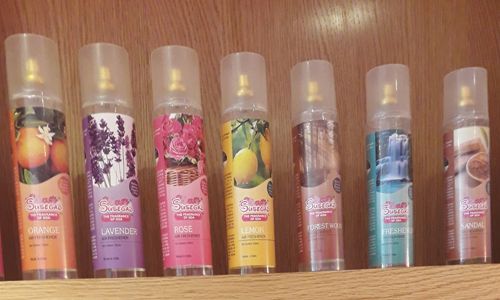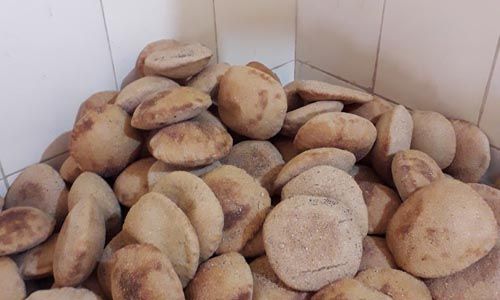While in the late 40's, when exports started, around 30-40 thousand tonnes of iron ore was exported through Mormugao Port. The last decade however showed an average export of 32 million tons of iron ore. The highest being 54.42 (Goan & Non-Goan origin) million tons exported in the year 2010. Before the ban in October 2012, the state mined about 11million tons. So, winners all around, except for Goa.
March 10-16, 2014
Mining Malaise – 7
Pushpa Iyengar
A cap that does not fit all
In the weeks before the code of conduct for the Lok Sabha elections became operational, when Chief Minister Manohar Parrikar was asked if the apex court did not give interim relief – he has been saying that mining would restart by April – what would he do? His reply: “I will go to (Narendra) Modi for amending the law to allow me mining”. Apart from counting his chickens before they hatch in seeing Modi as PM, Parrikar’s palpable eagerness was also influenced by the fact that if mining did not happen soon, then he could not do anything till May-end because the model code of conduct will be in place. Since the Goa government called a halt to mining after the Supreme Court banned it on October 5, 2012, it should also be lifted – after it gets the green signal from the Apex Court – by this government.
Since the ban on mining was effected by the Goa government after the Supreme Court banned it on October 5, 2012, it should also be lifted only after it gets the green signal from the court – by this government.
Parrikar is hoping not to go to voters having to apologise during his campaign that after 18 months of mining closure, he is still struggling to get it restarted. Last year, he kept repeating that it would start before monsoon/ after monsoon, but nothing happened except barge owners, truckers not to mention mine-owners got more frustrated with his government.
Parrikar's logic
Maybe it is to indulge them, not to mention fill his government's depleted coffers, that he is toeing their line on the capping issue. In a recent interview, he said, There is a basic logic that the cap concept has to be explored as I feel where do we cap; cap it for a local mine, cap it for a village, cap it for a taluka, cap it for state or cap it for country. A cap should be a production cap, it has to be across the country. A country has to decide. His reasoning is that, For individual mines the cap exists through an environment clearance certificate. "The cap we are proposing is because of logistical and other problems. So if there is no logistical problem and if proper exploration is carried out, based on the real quantum of the ore I feel that a cap can be decided but I don't think you should call it a cap, you can allow things to be controlled based on economy all."
The other significant thing is that he seemed to have already clued into mine-owners' thinking when he brought out his mining policy last year in which it was stated that mining cap on leases should be 45 million tons. When the government submitted this before the Supreme Court last September, the court asked, "How do we assess what is the cap? We have to arrive at a figure keeping in mind intergenerational equity and the environmental carrying capacity. Unless that is first known how can we allow? (mining to start)." A valid question considering that Goa's shipments reached more than 50 million tons in the 2010-11 fiscal, the boom that led to the bust.
An example of how things can go haywire can be read from the complaint recently by the Mines Director Prasanna Acharya alleging that the directors and officials of Frost International Ltd, Panjim and officers of the mines department forged official documents and no-objection certificates to illegally export 135,00,000 metric tons of ore to China in 2010-11, which had caused a loss of Rs. 1,18,00,000. The crime branch has registered an offence under sections 468, 471, 420, 120-B IPC, sec-4 (1-A) r/w 21 Mines & Mineral (development & regulation) Act 1957 sub rule 2 & 3 r/w rule 7 of the Goa (prevention of illegal mining, transportation & storage of minerals) and rule 2004, sec-7,12 & 13 of Prevention of Corruption Act, 1988. The case is likely to be transferred to a special investigation team, which is already probing nine illegal mining cases involving several high profile persons.
A sane calculation
Goa Foundation, whose petition before the Apex Court, had halted mining has recommended gross capping of five million tons per annum with a complete ban on ore exports. Stakeholders like barges, trucks, machinery owners have suggested an annual cap of 45-50 million tonnes. The last segment was quite vocal at the closed door meeting on January 23 with the court-appointed six-member expert panel which recommended a ceiling or capping of iron ore in their submissions before the Supreme Court on February 15.
They feel that capping at a lower figure would "spell doom for the industry". "We require a volume of 50 million tons cargo for exports to survive, otherwise the barge industry would not be viable. Export is a must for the state's livelihood," the Goa Barge Owners Association Vice President Chandrakant Gawas said. There are around 305 barges with 6,000 crew members and have a loan liability of Rs. 360 crore (Rs. 1 crore 1,00,00,000) in the state, according to reports.
For owners, mining is the golden goose
Mine-owners kept their counsel at the meeting but as Claude Alvares of the Goa Foundation pointed out, it's they who stand to gain most. He has always underlined that the major investments in the mining industry have been made by the truck and barge owners, while the profits have been raked in by the mine owners. Quoting figures that mine owners themselves made before the Indian Bureau of Mines (IBM), Claude pointed out that the owners had made an investment of only Rs. 620 crore (Rs 620,00,00,000), but in one year alone, that is 2010 -2011, they made a profit of Rs. 11,000 crores (11000,00,00,000). As opposed to truck and barge owners who had made investments of Rs. 2,400 crores (2400,00,00,000).
It�s the economy, stupid
Apart from batting for mine-owners, Parrikar is under pressure from the economy. In the governor's (Bharat Vir Wanchoo) speech before the assembly in March, the government harped on it. "My government has time and again appraised the central government on the gravity of the situation, in terms of its impact on the economy of the state in general and on the lives of the people in particular and has requested for financial assistance," Wanchoo said.
He added, "However, despite our best efforts, the central government failed to react in any positive way, even though it has been the biggest beneficiary of iron ore mining and its exports from Goa, in the past when mining activity was in full swing."
That it's a major concern can be read from Parrikar's earlier statement. "Goa's GDP growth, which would have been 16-17 per cent in the last 18 months, has come down to 7-8 per cent. The impact because of the closure of mining is Rs. 25,000 crore (25,000,00,00,000). GDP growth is down by 10 per cent. Increase in GDP is much less than what it would have been because of the mining ban." According to him, state revenue declined by 25 per cent to Rs. 4,500 crore (4,500,00,00,000) from the levels of Rs. 6,000 crore (6,000,00,00,000) due to the ban, while cost on items, including electricity and salary and wages, rose by 30 per cent.
With the IBM allowing exploration of even very low grade ores, Parrikar expects Goa's iron ore reserves to be about three billion tones.
Laughing all the way to the bank
Mine-owners do not want capping because they are eyeing the 1.4 billon tons of iron ore reserves (according to one estimate), and feel Goa should exploit the opportunity when the demand for ore is good, which is what they did during the boom and the subsequent bust for them.
According to the website of the Goa Mineral Ore Exporters' Association, while in the late 40's, when exports started, around 30-40 thousand tonnes of iron ore was exported through Mormugao Port. The last decade however showed an average export of 32 million tons of iron ore. The highest being 54.42 (Goan & Non-Goan origin) million tons exported in the year 2010. Before the ban in October 2012, in that financial year, the state mined about 11 million tons. So, winners all around, except for Goa.



